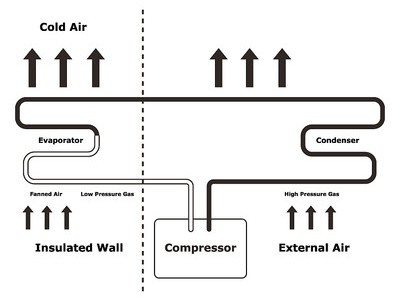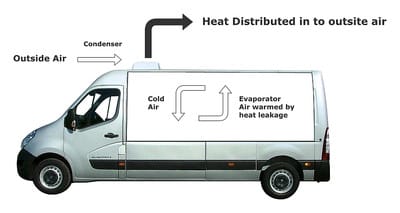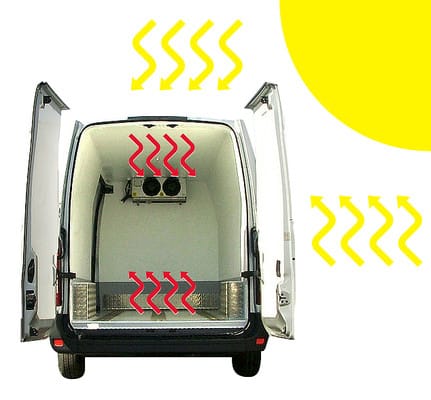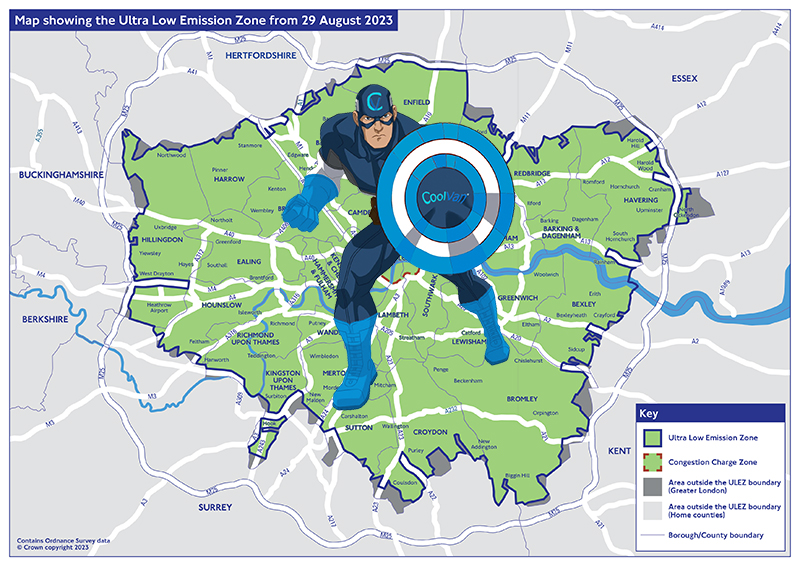Transport Refrigeration Explained

Within various industries such as the food industry it is a necessity that refrigerated vans are used as well as with other chilled or frozen products. These chilled or frozen products must complete a chain known as the cold chain before they are received by the consumer – the end user. It is vital that as the chilled or frozen products make a transition between these stages they do not become affected by any significant rise in temperature. If this occurs then the chilled or frozen product could change state and thus be unusable, for this reason refrigerated transport is used.
A common misunderstanding is that transport refrigeration used in vehicles such as a refrigerated van can actually create cold. This is not actually the case, although it may feel cold within a refrigerated van or any form of refrigerated transport they work by actually removing heat, not creating cold! Extremely low temperatures can be achieved simply by removing more heat. If you place a cold item within a warm place then it starts to absorb heat, this absorption causes it to warm up again and refrigerated transport stops this process by ensuring that the vehicle remains at the temperature required.
The majority of refrigeration systems tend to work in the same way; they have three main parts:
The Evaporator
The Compressor
The Condenser

Cold liquid refrigerant is placed in tubes, these are in the Evaporator and it is the cold liquid refrigerant which absorbs the heat from the surrounding air. Whilst the heat is being removed by the liquid it actually causes it to change state and it forms a low-pressure gas. This gas is then pumped away from the evaporator and with this the gas takes away the absorbed heat.
The Compressor is what pumps the refrigerant into a high pressure gas and then, the Condenser works by having air from the outside blown through it. It removes the heat from the refrigerant gas and turns it back into liquid form. Then the whole process begins again, it runs in a complete circuit.
A refrigerated vehicle therefore works not by suddenly creating cold but rather by removing heat from one place, this is then moved elsewhere. In the case of say a refrigerated van the heat is moved from the inside of the vehicle and thus dispersed into the air on the outside.

Refrigerated transport must have insulation applied to the body in order to prevent heat from the outside getting through to the products which are on the inside. Furthermore it must obviously incorporate a fridge unit to cool down the inside of the body which can remove any heat which has got in whilst the vehicle is being operated. It is these two factors which must work together in order to create the complete refrigeration system.

Keeping heat out is what the insulated body must do in a highly efficient manner whilst the fridge unit must have enough power in order to remove any excess heat which cannot be kept out by the insulation. If there is heat leaking in and this is equal to or less than the heat which is taken out then the product will stay cold. On the other hand if the heat which is leaking in becomes greater than the heat which is being taken out then the product will warm up.
Careful consideration must be taken when selecting a refrigerated vehicle, it is important to note that the unit or system can cope with the temperatures you need to achieve. Coolvan can help you to find the refrigerated vehicle you need at ease – with our Fridge & Go vehicles there is no need for you to have to wait for them to be manufactured, they do exactly as the name suggests.
For more information then contact us on 0845 3311484 or email info@coolvan.co.uk.



